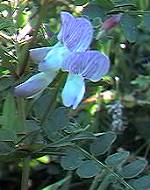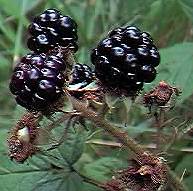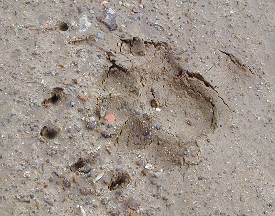| Latin name |
Common name |
| Achillea millefolium |
Yarrow |
| Agrimonia eupatoria |
Agrimony, common |
| Ajuga reptans |
Bugle |
| Alchemilla vulgaris agg. |
Lady's mantle |
| Angelica sylvestris |
Angelica |
| Arctium minus |
Burdock |
| Artemesia vulgaris |
Mugwort |
| Atriplex patula |
Orache |
| Campanula latifolia |
Bellflower, greater |
| Campanula rotundifolia |
Harebell |
| Capsella bursa-pastoris |
Shepherds purse |
| Cardamine flexuosa |
Bittercress, wavy |
| Carduus crispus |
Thistle, welted |
| Carduus nutans |
Thistle, musk |
| Centaurea nigra |
Knapweed, common |
| Centaurium erythraea |
Centaury |
| Cerastium fontanum |
Mouse ear, common |
| Chamaenerion angustifolium |
Willowherb, rosebay or Fireweed |
| Chenopodium rubrum |
Red goosefoot |
| Chrysosplenium oppositifolium |
Golden saxifrage, opposite leaved |
| Circaea lutetiana |
Enchanters nightshade |
| Cirsium arvense |
Thistle, creeping |
| Cirsium palustre |
Thistle, marsh |
| Cirsium vulgare |
Thistle, spear |
| Crepis capillaris |
Hawksbeard, smooth |
| Cruciata laevipes |
Crosswort |
| Epilobium hirsutum |
Willowherb, great |
| Epilobium montanum |
Willowherb, broad leaved |
| Erodium cicutarium |
Storksbill |
| Euphrasia officinalis agg. |
Eyebright |
| Fallopia convolvulus |
Bindweed, black |
| Filipendula ulmaria |
Meadowsweet |
| Galeopsis tetrahit |
Hempnettle, common |
| Galium aparine |
Cleavers |
| Galium verum |
Bedstraw, ladys |
| Geranium molle |
Cranesbill, dovesfoot |
| Geranium pratense |
Cranesbill, meadow |
| Geranium robertianum |
Herb robert |
| Geum urbanum |
Avens, wood |
| Glechoma hederacea |
Ground ivy |
| Gnaphalium uliginosum |
Cudweed, marsh |
| Heracleum sphondylium |
Hogweed |
| Hieracium species |
Hawkweed |
| Hyacinthoides non-scripta |
Bluebell |
| Hypericum perforatum |
St Johnswort, perforate |
| Hypericum tetrapterum |
St Johnswort, square stalked |
| Hypochaeris radicata |
Catsear |
| Impatiens glandulifera |
Balsam, Himalayan |
| Knautia arvensis |
Scabious, field |
| Lamium purpureum |
Deadnettle, red |
| Lapsana communis |
Nipplewort |
| Lathyrus pratensis |
Meadow vetchling |
| Leontodon autumnalis |
Hawkbit, autumn |
| Leontodon hispidus |
Hawkbit, rough |
| Linum catharticum |
Flax, fairy |
| Lonicera periclymenum |
Honeysuckle |
| Lotus corniculatus |
Birdsfoot trefoil, common |
| Lotus pedunculatus |
Birdsfoot trefoil, greater |
| Lysimachia nemorum |
Yellow pimpernel |
| Matricaria discoidea |
Pineapple weed |
| Matricaria recutita |
Mayweed, scented |
| Medicago lupulina |
Medick, black |
| Mentha aquatica |
Mint, water |
| Mentha arvensis |
Mint, corn |
| Mercurialis perennis |
Dogs mercury |
| Myosotis arvensis |
Forgetmenot, field |
| Odontites verna |
Red bartsia |
| Oxalis acetosella |
Wood sorrel |
| Papaver rhoeas |
Poppy, common |
| Persicaria hydropiper |
Water pepper |
| Persicaria lapathifolia |
Pale persicaria |
| Persicaria maculosa |
Redshank |
| Pilosella officinarum |
Hawkweed, mouse eared |
| Plantago lancelata |
Plantain, ribwort |
| Plantago major |
Plantain, greater |
| Polygonum aviculare |
Knotgrass |
| Potentilla anserina |
Silverweed |
| Potentilla erecta |
Tormentil |
| Potentilla reptans |
Cinquefoil, creeping |
| Prunella vulgaris |
Self heal |
| Ranunculus repens |
Buttercup, creeping |
| Raphanus raphanistrum |
Radish, wild |
| Rubus fruticosus |
Bramble |
| Rubus idaeus |
Raspberry |
| Rumex acetosa |
Sorrel, common |
| Rumex acetosella |
Sorrel, sheeps |
| Rumex obtusifolius |
Dock, broad leaved |
| Rumex sanguineus |
Dock, wood |
| Sanguisorba minor |
Burnet, salad |
| Scrophularia auriculata |
Figwort, water |
| Scrophularia nodosa |
Figwort, common |
| Senecio jacobea |
Ragwort, common |
| Senecio vulgaris |
Groundsel, common |
| Silene dioica |
Campion, red |
| Sisymbrium officinalis |
Hedge mustard |
| Sonchus arvensis |
Sowthistle, corn or perennial |
| Sonchus asper |
Sowthistle, rough |
| Spergula arvensis |
Spurrey, corn |
| Stachys sylvatica |
Woundwort, hedge |
| Stellaria media |
Chickweed, common |
| Succisa pratensis |
Scabious, devilsbit |
| Taraxacum sp. |
Dandelion |
| Teucrium scorodonia |
Wood sage |
| Thymus polytrichus |
Thyme |
| Trifolium dubium |
Trefoil, lesser |
| Trifolium pratense |
Clover, red |
| Trifolium repens |
Clover, white |
| Urtica dioica |
Nettle, common |
| Urtica urens |
Nettle, small |
| Valeriana officinalis |
Valerian, common |
| Veronica arvensis |
Speedwell, wall |
| Veronica beccabunga |
Speedwell, brooklime |
| Veronica chamaedrys |
Speedwell, germander |
| Veronica officinalis |
Speedwell, heath |
| Veronica persica |
Speedwell, common |
| Veronica serpyllifolia |
Speedwell, thyme leaved |
| Vicia cracca |
Vetch, tufted |
| Vicia sepium |
Vetch, bush |
| Vicia sylvatica |
Vetch, wood |
| Viola arvensis |
Pansy, field |
| |

Wood Vetch

Devil’s Bit Scabious

Hawkweed

Bramble
|
 11 members met at this slightly out-of-the-way farm in the Howardian Hills, including two new members whom we were delighted to welcome (and one intrepid member who had walked to the rendezvous from Slingsby!). We were welcomed by Susan Bragg, the new project officer for the AONB (Area of Outstanding Natural Beauty), who introduced the area to us, and also gave us a bit of history on the development of the AONB. We then set off for what she thought would be about a 4-hour walk, but she hadn't reckoned with the botanists who kept finding interesting plants and dropping behind! We logged over 160 species, many of them in flower; and this is an underestimate of those present as we did not identify most of the grasses, nor all the sedges we saw. So this is clearly a very rich area, partly because of the variety of habitats, including sandy fields, wetland, woodland and some more base-rich areas.
11 members met at this slightly out-of-the-way farm in the Howardian Hills, including two new members whom we were delighted to welcome (and one intrepid member who had walked to the rendezvous from Slingsby!). We were welcomed by Susan Bragg, the new project officer for the AONB (Area of Outstanding Natural Beauty), who introduced the area to us, and also gave us a bit of history on the development of the AONB. We then set off for what she thought would be about a 4-hour walk, but she hadn't reckoned with the botanists who kept finding interesting plants and dropping behind! We logged over 160 species, many of them in flower; and this is an underestimate of those present as we did not identify most of the grasses, nor all the sedges we saw. So this is clearly a very rich area, partly because of the variety of habitats, including sandy fields, wetland, woodland and some more base-rich areas. It was wonderful to see the animals outside, enjoying the open air and mudbaths, but apparently the unit is not economic in the present mad world and may have to close. This part of the farm is on very sandy, quite acid soils, which meant a wide variety of weeds I was less familiar with since I live on neutral, even limy soil. The corn sow-thistles in particular were making a fine show, and there were more unusual plants such as corn spurrey. Several areas were presumably set-aside and had a magnificent growth of “weeds”, mostly redleg and the closely-related pale persicaria, together with such flowers as speedwell and pineapple-weed along the edge of the track. I have never seen such large and healthy-looking field pansies, which suggests that the soil had been well fertilised.
It was wonderful to see the animals outside, enjoying the open air and mudbaths, but apparently the unit is not economic in the present mad world and may have to close. This part of the farm is on very sandy, quite acid soils, which meant a wide variety of weeds I was less familiar with since I live on neutral, even limy soil. The corn sow-thistles in particular were making a fine show, and there were more unusual plants such as corn spurrey. Several areas were presumably set-aside and had a magnificent growth of “weeds”, mostly redleg and the closely-related pale persicaria, together with such flowers as speedwell and pineapple-weed along the edge of the track. I have never seen such large and healthy-looking field pansies, which suggests that the soil had been well fertilised.  At the top of the wood we crossed the “Entrenchment” marked on the OS map, probably an Iron Age defensive bank, that runs all along the crest of this ridge above the Vale of Pickering. We had our lunch at the top of Fryton Lane. Here we were on limestone, and the flora changed to reflect this, with such lime-loving species as quaking grass, field scabious and salad burnet. We made a brief diversion down the lane to see the Millennium seat and artwork which had been placed by the people of Fryton with support from the AONB. The next phase of the walk was down through the wood to Hollin Hill Bogs, a very interesting area of wetland in the valley bottom (on the Oxford Clay). This was quite a mosaic of different habitats, including a zone of prehistoric-looking sedges in alder carr. The tussock sedge (Carex paniculata) was particularly impressive, growing on a plinth of its own dead leaves. Many of the plants in this area, especially the wetter parts, had finished flowering. It would be most interesting to re-visit the area earlier in the year, when such species as valerian and the sedges would be in flower. We did not spend as long here as some of the botanists would have liked – but quite long enough for the local midges to find us!
At the top of the wood we crossed the “Entrenchment” marked on the OS map, probably an Iron Age defensive bank, that runs all along the crest of this ridge above the Vale of Pickering. We had our lunch at the top of Fryton Lane. Here we were on limestone, and the flora changed to reflect this, with such lime-loving species as quaking grass, field scabious and salad burnet. We made a brief diversion down the lane to see the Millennium seat and artwork which had been placed by the people of Fryton with support from the AONB. The next phase of the walk was down through the wood to Hollin Hill Bogs, a very interesting area of wetland in the valley bottom (on the Oxford Clay). This was quite a mosaic of different habitats, including a zone of prehistoric-looking sedges in alder carr. The tussock sedge (Carex paniculata) was particularly impressive, growing on a plinth of its own dead leaves. Many of the plants in this area, especially the wetter parts, had finished flowering. It would be most interesting to re-visit the area earlier in the year, when such species as valerian and the sedges would be in flower. We did not spend as long here as some of the botanists would have liked – but quite long enough for the local midges to find us!




